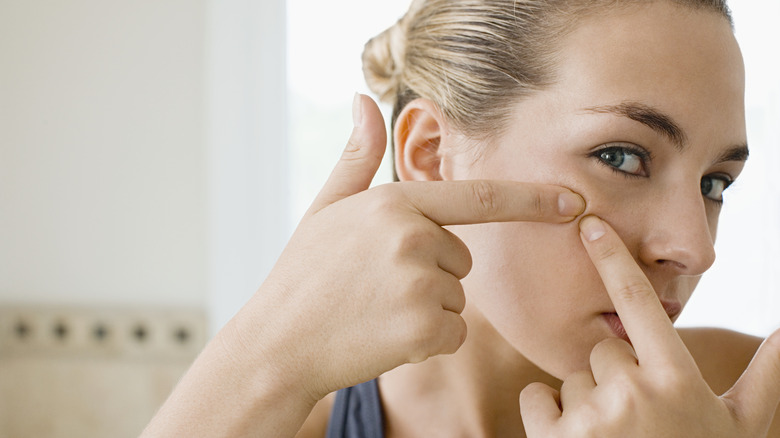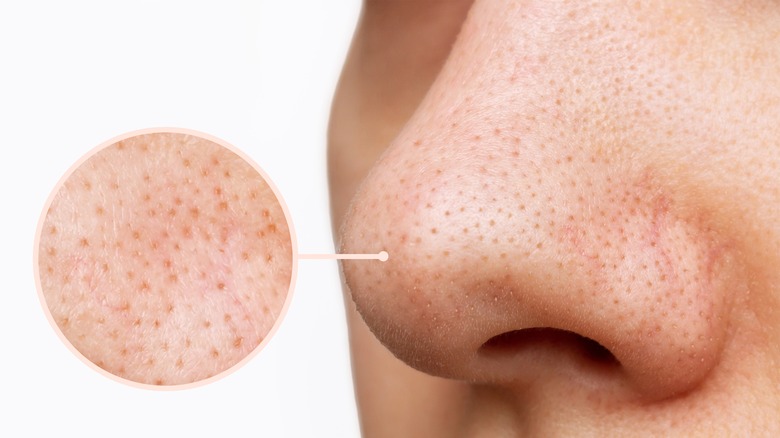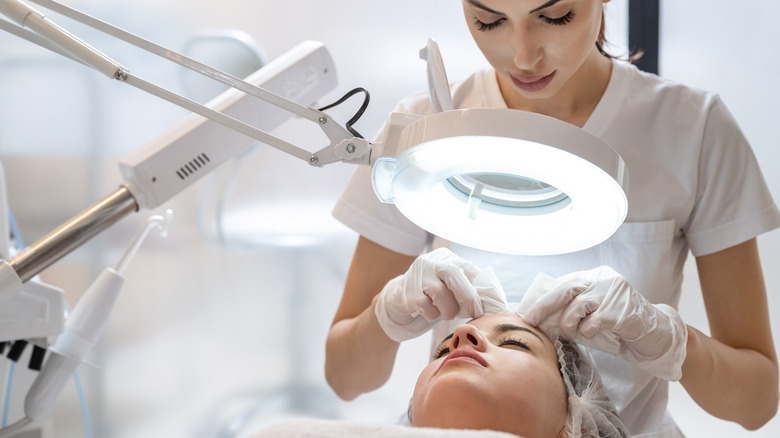The Black Dots In Your Pores May Not Be Blackheads After All
Who doesn't want perfect skin? Then, we could all wake up flawless like Beyoncé. Unfortunately, until those prayers are answered, you'll have to deal with the reality of pimples, whiteheads, and blackheads. These nuisances all fall under the acne category. The American Academy of Dermatology reports that up to 50 million Americans every year will experience some form of acne. It's a super common skin condition that can affect people at any age, and the severity of acne differs between individuals.
Thankfully, it doesn't pose any serious health risks and there are plenty of ways to effectively treat adult acne. According to Healthline, you can blame dead skin cells, bacteria, dirt, and oil for clogging the hair follicles on your skin and causing acne, among other things. In particular, pimples are pus-filled bumps, whiteheads are clogged pores that are closed over, and blackheads are clogged pores that are open. However, some of those annoying black dots in your pores may not be blackheads at all.
What are sebaceous filaments?
Sebaceous filaments are commonly mistaken for blackheads mainly because the two look quite similar. However, sebaceous filaments are usually gray, yellow, or clear when you look closer, as opposed to black. Cosmopolitan notes that sebaceous filaments are a store of oily liquid, called sebum, which is created by sebaceous glands to moisturize the skin. Luckily, they are not a form of acne and are completely normal.
But as Medical News Today warns, if these glands create too much sebum it can sit in the pores and fill up to the surface, creating visible sebaceous filaments. And, the overcollection of sebum can eventually become a blackhead. When the oil mixes with bacteria, dead cells, or dirt it forms a small bump. And, per Healthline, when that filled pore is exposed to the air it darkens to form the black color we associate with blackheads.
Keep in mind that your skin type can affect the appearance of filaments. If you have large pores or oily skin, your sebaceous filaments will be more obvious to the naked eye.
How to minimize their appearance
Sadly, there is no getting rid of your sebaceous filaments. It is the sebaceous gland's duty to make sebum and squeezing the oil out will not stop it from producing more. Healthline warns that trying to extract your filaments can cause greater issues down the line, too. You'll be putting your skin at risk of scarring and increased exposure to bacteria, which will naturally cause more blemishes. There's even a risk of permanently enlarging your pores too, according to Cosmopolitan.
To prevent these filaments from becoming acne, Cosmopolitan suggests using a chemical exfoliant. However, bear in mind that overuse of chemical exfoliants can dry out your skin. If your sebaceous filaments turn into blackheads, you can at least get rid of those. SELF recommends cleansing your face morning and night. For those who enjoy working out, you'll need a post-exercise facial cleansing session too.
Of course, if pimple popping releases more endorphins than cardio, you'll need to refrain from squeezing these bumps on your face. Think twice before extracting your own blackheads though, since you can run into many of the same issues, causing more harm than good. If in doubt, leave it alone, which goes for your sebaceous filaments too.


